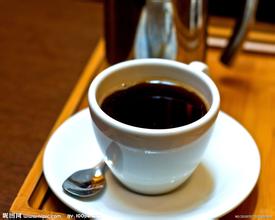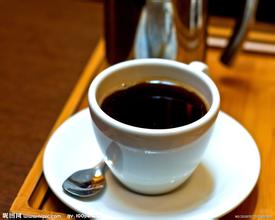Variety types of coffee trees
BORBON originated from La Reunion, a small island near Europe-Mozambique. It is adjacent to Madagascar, commonly known as Spice Island. Because BORBON tree is sensitive to insects and bacteria, it is a vulnerable tree species, but its yield is high, so it needs special care. It is more suitable for planting in high-latitude mountain areas, but it is not easy to resist diseases when planting on lowland. Because of this, when the tree type is wide-spreading (outward extension), the plant spacing is wider, so more land space is needed to achieve yield. BORBON coffee beans have a very smooth appearance and good appearance, with a very high-quality coffee quality and taste balance, is the perfect combination of all kinds of coffee! The overall texture is pleasant and charming; it can make a cup of coffee give off a lingering aftertaste, which is most suitable for a person to taste it carefully, which is as famous as its American famous BORBON whisky for its smoothness, smoothness and sweetness. [1]
Coffee Tree-Variety Type
Arabica bean coffee trees can be divided into two main varieties: Arabica (Coffea Arabica) and Robusta (Coffea Robusta/Coffea Canephora). In addition, there are some minor species, such as Coffea Liberica and Coffea Arabusta, but they are rare on the market.
Robusta beans Robusta coffee trees can grow on flat land, it has a strong resistance to disease, and the yield is higher. Compared with Arabica beans, Robusta beans are more round in appearance, with a slightly inflated side with cracks in the middle, and straight grooves reminiscent of soybeans, while Arabica beans are oval and zigzag, a bit like half a peanut.
Generally speaking, Robusta beans are poor in taste, have 2 to 3 times the caffeine content of Arabica beans, and are cheap, mostly for the large coffee industry to produce instant coffee or low-cost comprehensive products. Arabica coffee trees are suitable for planting on fertile slopes with good drainage at an altitude of about 1000 to 2,000 meters. The climate for growth should not be too humid, but it still requires a continuous rainy season and abundant rainfall.

Important Notice :
前街咖啡 FrontStreet Coffee has moved to new addredd:
FrontStreet Coffee Address: 315,Donghua East Road,GuangZhou
Tel:020 38364473
- Prev

Introduction to the types of boutique coffee beans the advantages of Indonesian cat shit white coffee
Mocha Coffee: Origin: Ethiopia has a unique aroma, moderate roasting has a soft sour taste, deep roasting gives out a strong aroma, occasionally used as a blend. Brazilian coffee: Origin: Brazilian sour and bitter taste can be mixed by baking, moderate roasting soft flavor, moderate taste, deep baking has a strong bitter taste, suitable for blending coffee. Colombia
- Next

The culture of coffee introduces the legend of the origin of coffee
The Story of the Shepherd: according to Roth de Neroy (1613-1707), a Roman linguist, about the coffee bean era in the sixth century, an Arab shepherd Kardai drove his sheep to the Isobian prairie for grazing. He was surprised to see that each goat was extremely excited and excited. He was surprised to see that each goat was extremely excited and excited.
Related
- Does Rose Summer choose Blue, Green or Red? Detailed explanation of Rose Summer Coffee plots and Classification in Panamanian Jade Manor
- What is the difference between the origin, producing area, processing plant, cooperative and manor of coffee beans?
- How fine does the espresso powder fit? how to grind the espresso?
- Sca coffee roasting degree color card coffee roasting degree 8 roasting color values what do you mean?
- The practice of lattes: how to make lattes at home
- Introduction to Indonesian Fine Coffee beans-- Java Coffee producing area of Indonesian Arabica Coffee
- How much will the flavor of light and medium roasted rose summer be expressed? What baking level is rose summer suitable for?
- Introduction to the characteristics of washing, sun-drying or wet-planing coffee commonly used in Mantenin, Indonesia
- Price characteristics of Arabica Coffee Bean Starbucks introduction to Manning Coffee Bean Taste producing area Variety Manor
- What is the authentic Yega flavor? What are the flavor characteristics of the really excellent Yejasuffi coffee beans?

